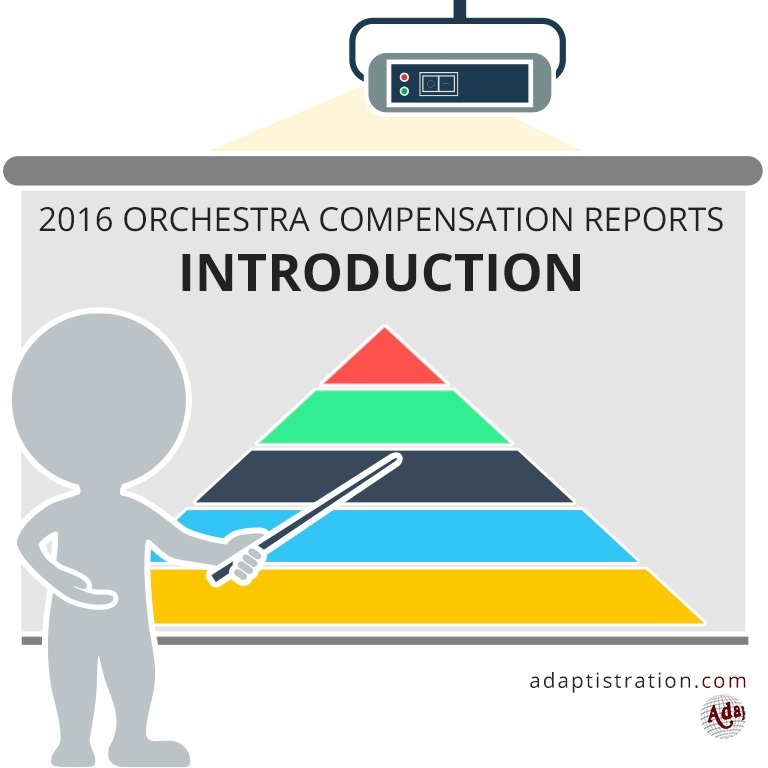Although the average Regional Orchestra Players Association (ROPA) executive director earned more than ever before during the 2005/06 season, the percent increase in average compensation slowed to its lowest point in the past seven years…
WHERE THE NUMBERS COME FROM
In order to provide information that is as accurate as possible, data from the 2005/06 season is gathered from the following sources:
- Executive Director Compensation figures were obtained from their respective orchestra’s IRS Form 990 for the 2005/06 concert season.
- Total Expenditures were also obtained from each respective orchestra’s IRS Form 990 for the 2005/06 concert season.
- Musician Base Salary figures were obtained from compensation records collected by the American Federation of Musicians (AFM) and ROPA settlement bulletins.
Adaptistration makes no claim to the accuracy of information from documents compiled or reported by external sources. If you have reason to believe any of the information is inaccurate or has changed since reported in any of the above sources and you can provide documentation to such effect, please feel free to submit a notice.
WHAT THE NUMBERS DON’T SHOW
It is important to remember that the numbers shown do not always convey a complete compensation picture. For example, an executive director may have had a large increase in salary due to a severance or deferred compensation package owed when the position was vacated. Additionally, the documents used to gather data do not indicate how much of the season an individual received a salary. As such, the cumulative compensation may artificially inflate annual earnings. Conversely, reported figures may not reflect bonuses or other incentive payments, therefore underreporting what executives may actually earn. As such, the cumulative compensation for executive directors may or may not be more than what is listed.
As for ROPA musicians, unlike the vast majority of their peers in ICSOM ensembles who all earn no less than the musician base salary, all ROPA ensembles use a tiered system of salary and/or per service payments. For example, although the Richmond Symphony may list a base musician salary of $28, 837, more than 60 percent of the musicians earn less than that base salary figure. Those players are paid using the sliding per service tier system and may earn as little as a few thousand dollars per season.
In the strictly per service ensembles, the figures listed in the “Base Musician” compensation column are actually the average annual income earned by section string players (or section wind players if no information for the string players was available). This figure is reported by the AFM because it best represents annual earnings for the musicians who perform the greatest number of services in any per
service orchestra; string musicians. However, those compensation figures are not always guaranteed. Additionally, the “Base Musician” figures do not include any additional payments offered by some organizations such as voluntary outreach services, and minimum overscale payments. Finally, opera or ballet organizations are not included in these reports, only symphonic and chamber orchestra ensembles.
TOP 10 EARNERS AND QUICK FACTS
- The average ROPA executive director continued to earn more than the previous year, although this was the smallest percentage increase in the past seven years.
- The average ROPA base musician compensation grew as well, although at a negligible percentage compared to executive compensation.
- The average ROPA executive director annual compensation continued to exceeded the six figure mark for the second season in a row whereas the average ROPA base musician compensation continues to fall short of exceeding the Federal Poverty Threshold for a two person family unit.



